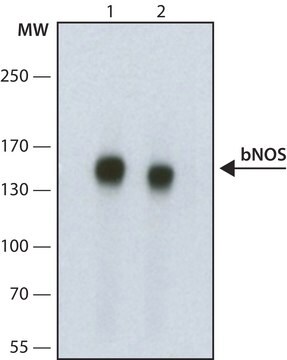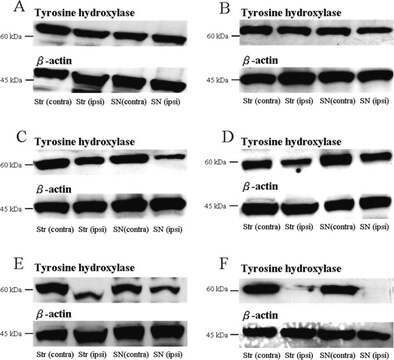MAB5280X
Anti-Tyrosine Hydroxylase Antibody, clone 2/40/15, Alexa Fluor™ 488
clone 2/40/15, Chemicon®, from mouse
Sinônimo(s):
Anti-DYT14, Anti-DYT14|, Anti-DYT5b, Anti-TYH
About This Item
Produtos recomendados
fonte biológica
mouse
Nível de qualidade
conjugado
ALEXA FLUOR™ 488
forma do anticorpo
purified immunoglobulin
tipo de produto de anticorpo
primary antibodies
clone
2/40/15, monoclonal
reatividade de espécies
rat, bovine, quail, chicken
fabricante/nome comercial
Chemicon®
técnica(s)
immunohistochemistry: suitable
Isotipo
IgG2a
nº de adesão NCBI
nº de adesão UniProt
Condições de expedição
wet ice
modificação pós-traducional do alvo
unmodified
Informações sobre genes
rat ... Th(25085)
Especificidade
Imunogênio
Aplicação
Optimal working dilutions must be determined by end user.
Neuroscience
Neurotransmitters & Receptors
Neuronal & Glial Markers
forma física
Armazenamento e estabilidade
Outras notas
Informações legais
Exoneração de responsabilidade
Unless otherwise stated in our catalog or other company documentation accompanying the product(s), our products are intended for research use only and are not to be used for any other purpose, which includes but is not limited to, unauthorized commercial uses, in vitro diagnostic uses, ex vivo or in vivo therapeutic uses or any type of consumption or application to humans or animals.
Não está encontrando o produto certo?
Experimente o nosso Ferramenta de seleção de produtos.
Código de classe de armazenamento
12 - Non Combustible Liquids
Classe de risco de água (WGK)
WGK 2
Ponto de fulgor (°F)
Not applicable
Ponto de fulgor (°C)
Not applicable
Certificados de análise (COA)
Busque Certificados de análise (COA) digitando o Número do Lote do produto. Os números de lote e remessa podem ser encontrados no rótulo de um produto após a palavra “Lot” ou “Batch”.
Já possui este produto?
Encontre a documentação dos produtos que você adquiriu recentemente na biblioteca de documentos.
Nossa equipe de cientistas tem experiência em todas as áreas de pesquisa, incluindo Life Sciences, ciência de materiais, síntese química, cromatografia, química analítica e muitas outras.
Entre em contato com a assistência técnica






